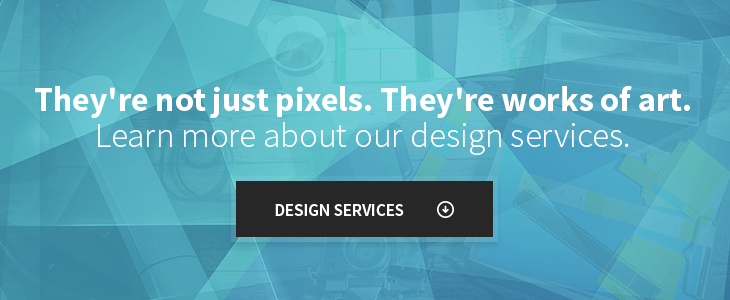UX or UI? The two are often confused for one another, though they are quite different.
User Interface (UI) is the thought process behind the display of a site. UI is imperative in order to create a user-friendly site your visitors can easily navigate. It’s about how they use it. With User Experience (UX), on the other hand, it's all about how the users feel as they navigate the site.
What elements can you add to your UX design that help evoke emotion from your visitors?
It all comes down to the style of how you put your site together. Branding is key in nurturing familiarity; however, it can often be taken a step further by adding animation or accentuating the logo itself. Adding this effect can evoke a positive emotion from the user, as well as create an additional “wow factor.”
Also, it's true that UI works in tandem with UX, since you can't produce a practical site without both. Functionality contributes to a better experience for your visitors. In this regard, thinking about more simplified web design features is a great first step in your UX design.
Giving Your Site An Intuitive Feel
The most satisfying feeling is when your UX design makes first-time visitors instantly feel like they understand how to navigate around the site. An intuitive design is crucial in creating that and generates a natural feel rather than something bolder that requires a major learning curve.
Simplified designs help, although that’s not to say that you need to dumb it down. Flat designs are a good middle ground in providing an intelligent design that's still easy to use.
In addition, you want a site that's easy to read and navigate for all types of users, especially with mobile usage on the rise. People are always in a hurry, so instantaneous information is key with mobile devices. Eliminating confusion can mean the difference between keeping a user on your page or have them bounce right out.
Sounds on Your Site
Sounds have decreased in usage over the years and are rarely seen on websites anymore. They can be a bit risky, particularly if a site uses too many loud, annoying sounds. Sound should only be used as subtle, hover effects or for interactive sections on a site, such as a landing page.
As part of your UX design, the type of sounds you choose form a very specific experience for the user and can evoke certain moods. However, finding the balance is key—avoid loud, startling sounds and automatic music players.
Simple is more: Let your site speak volumes visually, not audibly.
The Importance of Color
Color is one of the most important elements in creating moods and can often dictate how we feel without us even realizing it. If you've ever read up on the psychology of color, you’ll know that they sometimes affect people's attitudes about certain things. It's no different on your website.
Picking colors that work together to communicate a message or emotion can sometimes be a hard and tedious task, but it’s absolutely vital. Once selected, add the color palette to your branding guide and stick to those colors across the board. Consistency is fundamental to maintaining a sense of branding and fostering a sense of recognition for your visitors.
Giving Users More Personal Control
Personal control can be a neat feature to offer on your site, when it’s appropriate. Do keep in mind that giving more control to the user can sometimes be a slippery slope and can weaken your visual brand.
Having features such as labeling or color palettes (within your branding color regulations, of course) to allow more user input can enhance the user’s experience. This can be seen with the Slack app, where the user can switch up their side panel to a color of their own choice.

This fun twist in design can still adhere to your own style and brand, yet still allow a user to choose specialized details that let them feel in control.
You have plenty to think about when it comes to your site’s UX design, with each layer adding toward making people feel good about your business. When you create positive feelings through your website’s design, you nurture immediate trust that you care about your customer’s experience.






